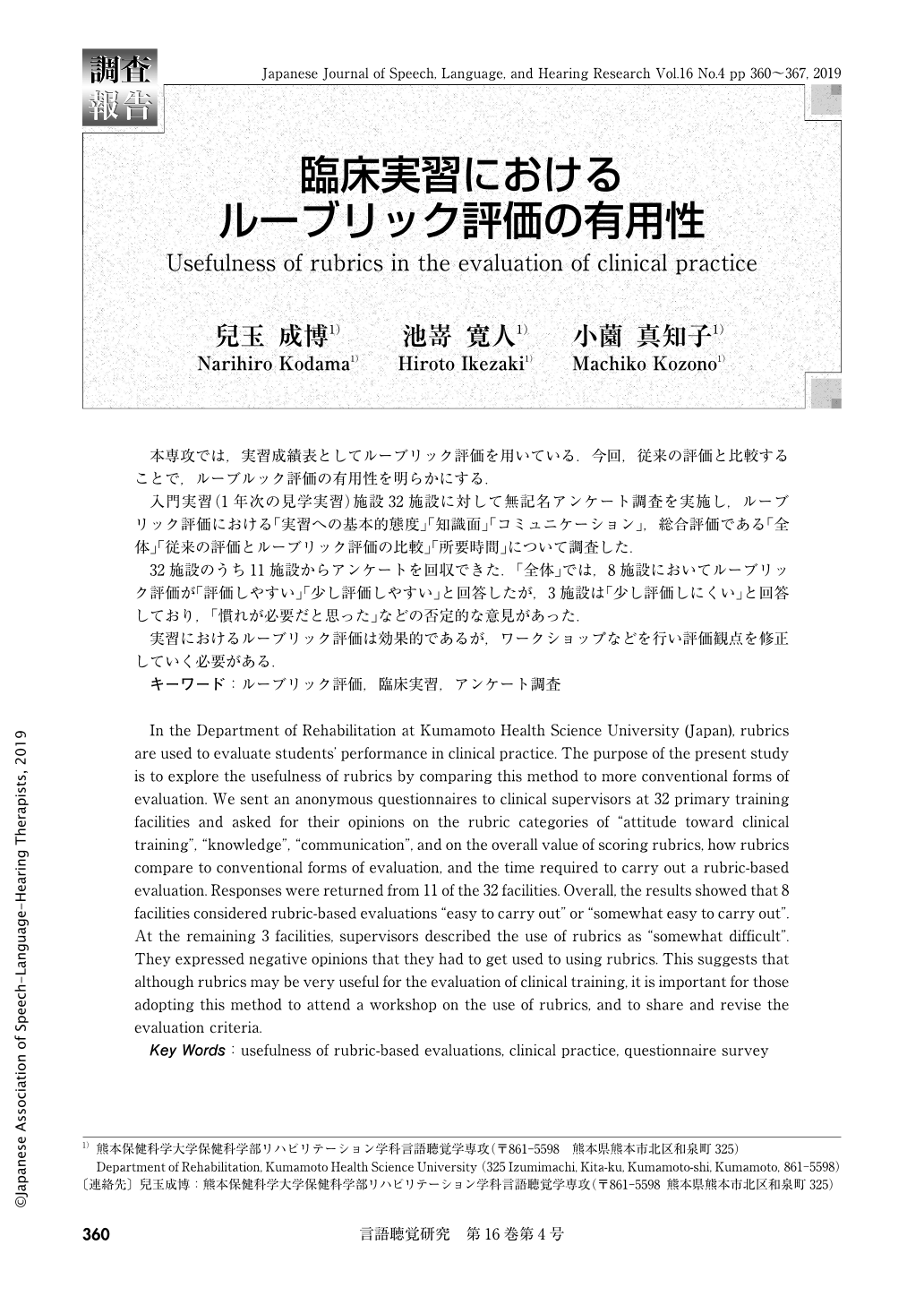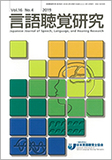Japanese
English
- 有料閲覧
- Abstract 文献概要
- 1ページ目 Look Inside
- 参考文献 Reference
- サイト内被引用 Cited by
本専攻では,実習成績表としてルーブリック評価を用いている.今回,従来の評価と比較することで,ルーブルック評価の有用性を明らかにする.
入門実習(1年次の見学実習)施設32施設に対して無記名アンケート調査を実施し,ルーブリック評価における「実習への基本的態度」「知識面」「コミュニケーション」,総合評価である「全体」「従来の評価とルーブリック評価の比較」「所要時間」について調査した.
32施設のうち11施設からアンケートを回収できた.「全体」では,8施設においてルーブリック評価が「評価しやすい」「少し評価しやすい」と回答したが,3施設は「少し評価しにくい」と回答しており,「慣れが必要だと思った」などの否定的な意見があった.
実習におけるルーブリック評価は効果的であるが,ワークショップなどを行い評価観点を修正していく必要がある.
In the Department of Rehabilitation at Kumamoto Health Science University (Japan), rubrics are used to evaluate students' performance in clinical practice. The purpose of the present study is to explore the usefulness of rubrics by comparing this method to more conventional forms of evaluation. We sent an anonymous questionnaires to clinical supervisors at 32 primary training facilities and asked for their opinions on the rubric categories of “attitude toward clinical training”, “knowledge”, “communication”, and on the overall value of scoring rubrics, how rubrics compare to conventional forms of evaluation, and the time required to carry out a rubric-based evaluation. Responses were returned from 11 of the 32 facilities. Overall, the results showed that 8 facilities considered rubric-based evaluations “easy to carry out” or “somewhat easy to carry out”. At the remaining 3 facilities, supervisors described the use of rubrics as “somewhat difficult”. They expressed negative opinions that they had to get used to using rubrics. This suggests that although rubrics may be very useful for the evaluation of clinical training, it is important for those adopting this method to attend a workshop on the use of rubrics, and to share and revise the evaluation criteria.

Copyright © 2019, Japanese Association of Speech-Language-Hearing Therapists. All rights reserved.


